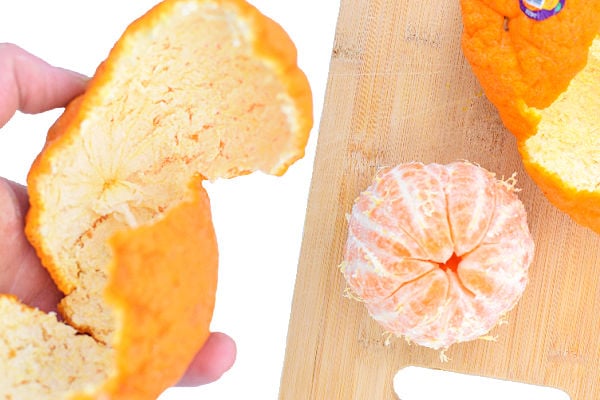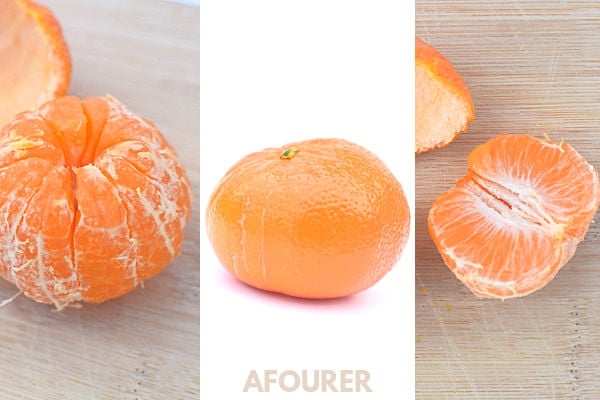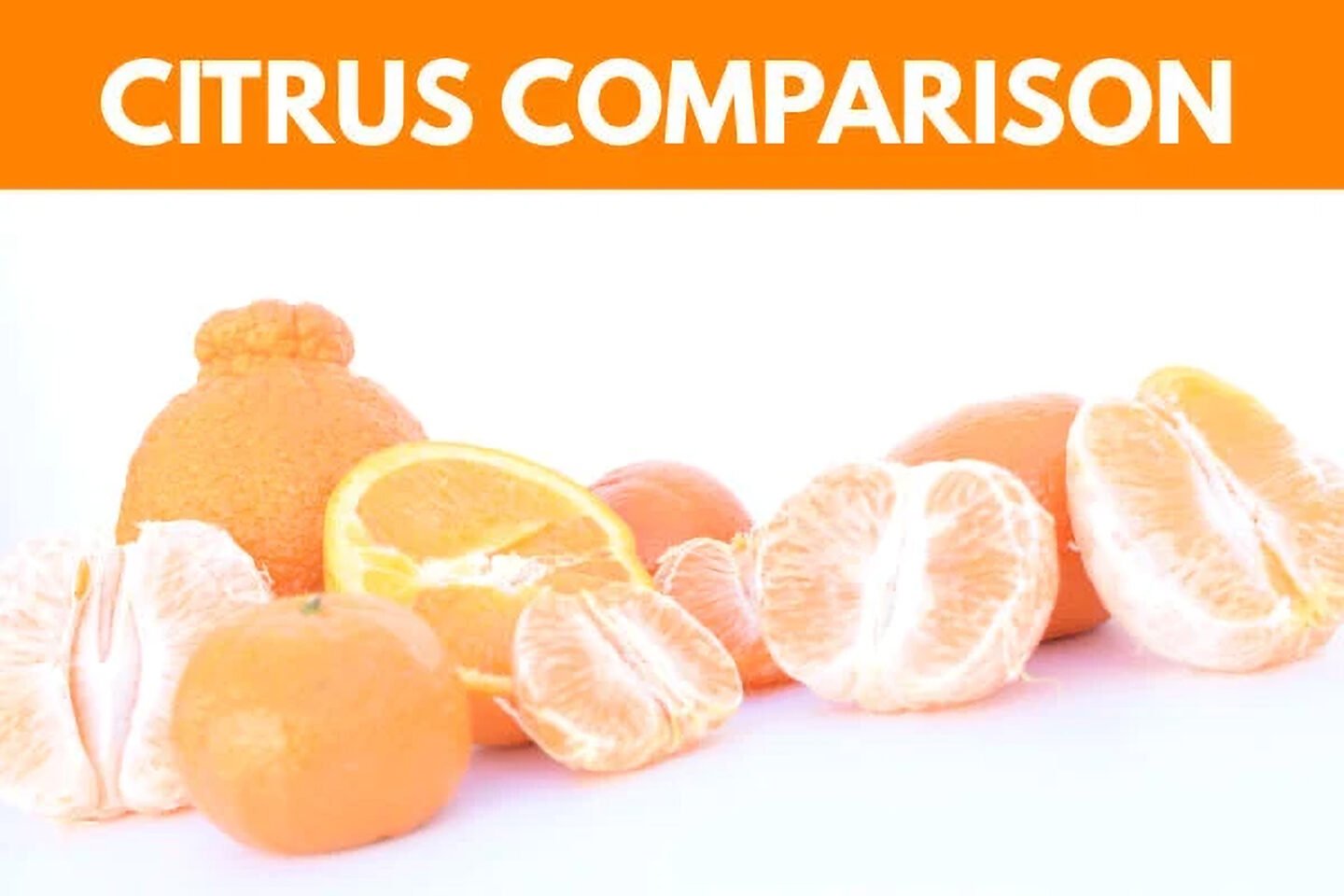Each year, as winter begins to release its cold grip on the country, the options for buying fresh fruit are painfully limited. The exception is mandarins; they pop up in supermarkets when you need them most, providing relief from the seemingly endless supply of bananas and apples.

The Sumo Citrus is a relatively new variety in the citrus category. It is also known as Dekopon and was born in Japan in 1972. Since production started in the United States in 2011, the fruit has quickly grown in popularity; it is now marketed in other parts of the world, like the United Kingdom and Australia.
If you like trying new fruit, then you're probably wondering, "What does a Sumo Citrus taste like?" We’re about to take a closer look at this quirky-looking fruit’s flavor and uses in the kitchen. We will also look at some other common citrus varieties to see how they compare.
Table of Contents
What does a Sumo Citrus taste like?
A Sumo Citrus is a sweet fruit with the taste of mandarin, like you would expect from other mandarin cultivars. It is unique, though, thanks to its low acidic, low tart flavor. Due to the very high sugar-to-acid ratio, as you bite into the flesh, there's no punchy tang that causes the lips to pucker.
One of the standout features of a Sumo Citrus is its size. It looks much bigger than your average mandarin, more like a tangelo or navel orange. It has a “grenade-like” shape with a “top knot,” which is a bumpy protrusion at the stem end of the fruit.

Once you dig your fingers into the Sumo you will instantly notice how simple it is to peel. Mandarins are known for their ease of peeling, but this takes “easy peel” to a whole new level. You could potentially open one of these while working the remote and scrolling through your Instagram feed!
The discarded skin is quite thick so the remaining fruit inside is a little smaller than you may be expecting. The fruit's skin isn't as thick as a pomelo, but it's certainly thicker than many other citrus varieties.
Housed neatly inside, there are 10-11 large sections of orange fruit which are covered in a fine pith. Although perfectly edible, if you take the time to remove the pith you'll find it's worth the effort. There is also a very fine layer of membrane that encases the flesh - again, it's edible. But carefully peel this off and you will be rewarded with tender, bite-sized pieces of fruit that we imagine are served in heaven.

Although some types of citrus are messy to eat, you'll find that a Sumo isn't one of them. Juice won't end up all over your hands after peeling the fruit. Not that juice is a big issue; but its nice to know you'll stay clean if you're in an office or at school. There are good levels of juice in this variety, however, you won't get as much as a navel orange.
Fruit growers have come a long way in recent decades with developing seedless fruit. You may be pleased to know that the Sumo Citrus is a Non GMO, seed-free fruit. The occasional pip may slip through the cracks, but that is not common.
Culinary uses
Use Sumos in your cooking like you would any other citrus fruit, keeping in mind the peel is excellent for adding flavor and aroma to a wide range of recipes.
1. On its own
The best and most common use for a Sumo Citrus is to simply peel and eat them fresh. They aren't too messy to take to work for an office snack and kids will be the envy of the playground when they pull one of these out of their lunch box.
2. Raw in recipes
In cooking, it is a good idea to use the fruit raw to maintain its color and texture. Fruit salads, garnishes on meat and desserts, or tossed into a couscous or rice salad are all excellent options.
3. Sweet treats
Add pieces of this mild citrus fruit to baked goods like cakes, muffins, tarts, and even crème brûlée. For an indulgent snack, skewer the fruit on sticks and dip them in melted chocolate. They also make a tasty, nutrition-packed ingredient in smoothies or fruit juice.
4. Zesting
The pale orange skin of a Sumo Citrus is packed with oil glands that are filled with aromatic essential oils. This peel can be well used in the kitchen for zesting like you would a lemon. Add the zest to tarts, cheesecakes, fudge, or create a mouth-watering "sumo meringue pie," the perfect dessert pie for those who dislike lemon flavor in their food.

Pairs with: meat, poultry, cheese, tropical fruit, seafood, nuts, seasonal greens.
Substitutes: Tangelos, Navel oranges, Other Mandarins
Availability and Storage
In the United States, the Sumo Citrus season is in late winter through until spring. It runs from January until April each year. If you’re in a country in the southern hemisphere, like Australia, then the season runs from August until September.
The sumo citrus can be stored at room temperature for up to four days before they start to turn a little mushy. When stored refrigerated, they can last from two to four weeks.
How does a Sumo measure up?
We took some other common types of citrus fruit and gave them a taste test to see how they compared to the Sumo Citrus. Here is what we found.

Murcott
A Murcott is a small mandarin orange that looks like a mini pumpkin once peeled. The first thing we noticed about this fruit is that its skin is thinner than a Sumos and it required more work to peel off. The flesh has a rich and sweet flavor with more of a tangy bite than a Sumo. This extra flavor will be appreciated by some, although we could see kids enjoying the more subtle flavor of a Sumo.

The biggest issue we had with the Murcott mandarin was that it was riddled with seeds and peeling it was quite messy. By the time the peel was removed juice was everywhere.
Afourer
An Afourer is a small to medium-sized fruit that has deep orange flesh and skin. Peeling this variety was almost as easy as peeling a Sumo, and noticeably easier than removing the skin from a Murcott.

The taste of an Afourer is pleasant with its juicy, intense mandarin flavor that has a subtle honey undertone. This variety of citrus had no pips so it was hassle-free, mess-free eating. Visually, the Afourer is a nice looking fruit once peeled with neat and even segments that easily pull apart.
Navel
Navel oranges range from medium to large in size and are round to slightly oval in shape. It gets its name from its characteristic “navel” or small hole in the stem end of the fruit. This variety of orange is hugely popular around the world and is well-known for its juicy and tender flesh which is sweet and seedless.

A navel orange has thinner skin than a Sumo Citrus so they offer excellent value for money. Once you've removed the peel from a Sumo the size of the fruit is considerably smaller.
Navels also have more juice and a slightly stronger flavor with extra tang. Peeling them takes more effort than a Sumo and slicing one up with a knife is usually the quickest way.
Minneola Tangelo
A Tangelo is a bright orange fruit with smooth skin that is thin and easy to peel. The flesh is very juicy and contains an interesting balance of intense sweet and tart flavor in one bite.

Although a Sumo Citrus looks bigger than a tangelo, once peeled the two fruits look quite similar in size. A Sumo has less juice and a much milder flavor with less acidity than a tangelo. Although our tangelo didn't have any seeds, they are known to have the occasional one waiting inside.
Auro
The Auro looked a lot like an Afourer mandarin and was just as easy to peel. It was also a seedless variety and was sweet and juicy. Like the Afourer and Murcott, it had a stronger mandarin flavor that the Sumo Citrus with more tanginess.

Nutrition Comparison
Like most citrus fruit, the Sumo Citrus is a useful source of vitamin C. It is also high in dietary fiber, potassium, and folate. The occasional serving of this fruit will help ward off those pesky colds that are all too common in the cooler months.

Compared to the other popular citrus cultivars we tested, a Sumo Citrus is higher in sugar with less fiber and vitamin C. When you create a new fruit that wins in so many areas, something has to give. These numbers aren't exactly a deal-breaker for the fruit though. If you eat them in moderation, the Sumo certainly beats junk food and tastes better too!
Check out the table below to compare the nutritional value of various types of citrus fruit.
| Fruit (120g) | Calories | Fat (Total) | Carbs | Fiber | Sugar | Vitamin C |
|---|---|---|---|---|---|---|
| Sumo Citrus | 60 | 0 | 16g | 2g | 13g | 30mg |
| Murcott | 51.4 | 0 | 13.7g | 2.6g | 10.3g | 54mg |
| Afourer | 52 | 0 | 14g | 3.2g | 10g | 55mg |
| Navel | 54.5 | 0 | 16.4g | 5.5g | 10.9g | 60.8mg |
| Tangelo | 56 | 0 | 14.1g | 2.9g | 11.2g | 63.8mg |
Fast Facts About the Sumo Citrus
- The Sumo Citrus belongs to the Rutaceae family and its botanical name is Citrus reticulata or Shiranui.
- The fruit is a cross between a ponkan (an Indian citrus) and a kiyomi (an orange and mandarin hybrid).
- Sumo Citruses have very little albedo which is the netting between the fruit and the skin. This is what makes the fruit so easy to peel.
- Harvesting the fruit is a time-consuming process as they must be hand-picked to avoid bruising.
- The Californian based company, Suntreat, began farming the fruit in 2011.
- In Japan, dekopon is such a popular fruit that a major food brand, Hi-Chew, previously released a limited-edition chewing candy in honor of this fruit.
Related Reading:
Check out our kaffir lime flavor guide.
What is a useful substitute for orange juice?
Find out what a yuzu tastes like.
Final Words
For fruit lovers, the winter season can be harsh with few tasty options available in-store. The dreary monotony of bananas and apples that have been stored too long comes to an end when bright orange mandarins hit the scene.
But some people find them a little messy to eat at the office or their acidity too much. Those complaints can end now that the Sumo Citrus is here. Okay, so it's been in the United States since 2011, but it has only recently become more readily available across the country and in other parts of the world. The Sumo Citrus is a delicious fruit that is high in sweetness and low in acidic tang. This is an excellent fruit for those that don't like strong flavors.

The fruit has a kooky looking shape to it which isn't a bad thing. We can imagine school kids would be happy to pull one of these out of their bag. It might even make a useful show and tell?
The fact that this fruit has great taste, no seeds, and is easy to peel makes it a winning fruit in our book. It is still a relatively expensive fruit but as production levels continue to rise we would hope to see this come down a little.
Have you ever tried a Sumo Citrus? Please let us know what you thought of it in the comments below.

Leave a Reply